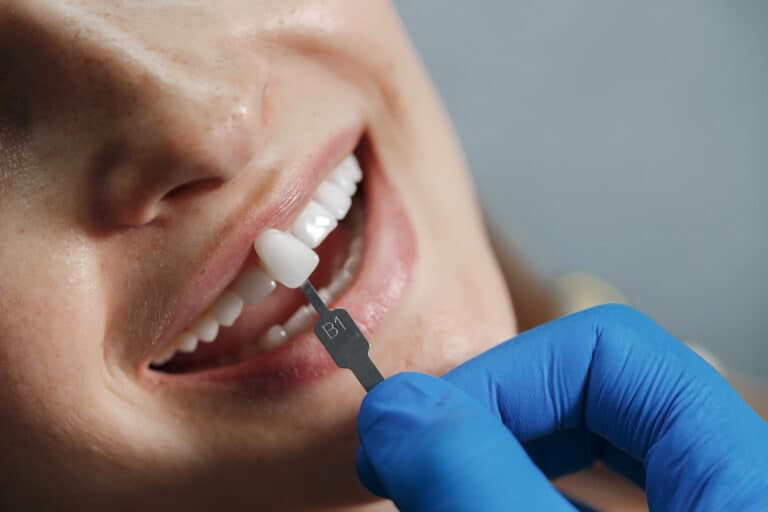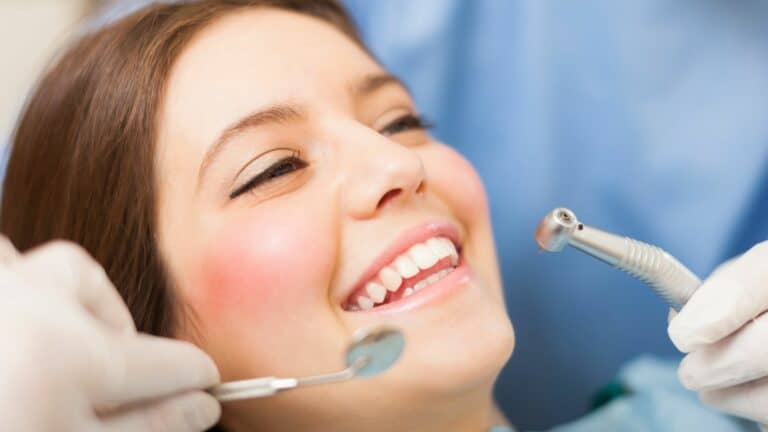Temporomandibular Joint (TMJ) disorders can cause significant discomfort, affecting one’s quality of life. Botox, commonly known for its cosmetic applications, has emerged as a surprising ally in the fight against TMJ-related symptoms. This article explores the multifaceted benefits of Botox for TMJ, its role in managing symptoms, and how it fits into the broader spectrum of TMJ therapies. As we unlock the potential of Botox for jaw relief, it’s essential to understand its efficacy, limitations, and how it compares to other treatment options.
Key Takeaways
- Botox for TMJ provides symptomatic relief by relaxing the masseter muscles, reducing spasms and pain, but does not address the root causes such as structural issues or joint inflammation.
- A comprehensive treatment approach for TMJ may include physical therapy, custom oral appliances, orthodontic alignments, and in some cases, surgery.
- Botox for bruxism (teeth grinding) can significantly alleviate the intensity of the condition, offering relief and preventing further dental damage.
- The effects of Botox for TMJ are temporary, usually lasting three to four months, necessitating repeated treatments for ongoing symptom management.
- While Botox for TMJ can be an effective, a scientifically grounded, personalized approach is crucial for achieving lasting relief and addressing the underlying causes of TMJ disorders.
Botox For TMJ: Not Just a Pretty Face

The Masseter Muscle Makeover
When it comes to TMJ relief, the masseter muscle plays a starring role. This powerhouse of a muscle not only aids in chewing but also bears the brunt of jaw muscle tension. Enter the cosmetic dentist, wielding Botox like a magic wand to relax those overworked facial muscles.
- Botox injections in the masseter muscle can provide immediate relief from the discomfort associated with TMJ and jaw clenching.
- The treatment may also contribute to a more harmonious facial symmetry, subtly contouring your jawline.
- Over time, this can reduce the wear and tear on your teeth from grinding, a condition known as bruxism.
The beauty of Botox for TMJ is not just skin deep. It delves into the muscle layers, easing tension and offering a reprieve from the constant pressure.
Remember, while Botox offers a quick fix, it’s not a one-and-done deal. Regular visits to your cosmetic dentist will ensure the muscle remains at ease, keeping that jawline sleek and the pain at bay. And let’s not forget, a relaxed masseter muscle means less strain on the other facial muscles, promoting overall facial harmony.
Teeth Grinding Be Gone: Botox for Bruxism
Wave goodbye to the nightly grind! Botox, a star in the cosmetic dentistry sky, is now shining its light on bruxism, offering a much-needed respite for those who clench and gnash their teeth in their sleep. By injecting small doses of botulinum toxin into the masseter muscles, Botox effectively relaxes these muscles, reducing the intensity of teeth grinding and safeguarding your precious pearly whites.
But the benefits don’t stop at just preventing tooth decay. Here’s a quick rundown of what you can expect:
- Pain Relief: Kiss those jaw aches and headaches goodbye. Botox helps to ease the tension that contributes to these discomforts.
- Tooth Protection: It’s like a knight in shining armor for your enamel, keeping those chompers intact.
- Sleep Quality: Better sleep without the grind? Yes, please! Botox can help turn those restless nights into peaceful slumber.
- Jaw Functionality: Improved movement and less strain on your TMJ means a happier jaw and a happier you.
While Botox offers a temporary fix, it’s a step towards reclaiming your comfort and potentially enhancing other dental treatments, like teeth whitening, by reducing the risk of further damage.
Remember, while Botox can be a game-changer, it’s not a one-size-fits-all solution. It’s essential to consult with a professional to tailor the treatment to your needs. After all, every smile is unique!
The Timeline of Botox for TMJ Relief: What to Expect Post-Injection
Once the Botox injection has been administered, the countdown to comfort begins. But what does this timeline actually look like? Let’s break it down:
- Immediate Aftermath: Right after the procedure, you might experience some mild discomfort or bruising at the injection sites. This is your body saying, “Hey, what’s up with the tiny intruder?” But don’t worry, it’s all part of the process.
- The First Few Days: Within the initial 72 hours, you may notice a decrease in pain and symptoms. It’s like your jaw is finally taking a much-needed vacation.
- Peak Performance: Typically, the full effects of the Botox procedure kick in after about 2 weeks. This is when your masseter muscle gets the memo to chill out, potentially easing that teeth-grinding habit.
- Long-Term Lookout: The relief can last anywhere from 3 to 6 months. After that, you might need to revisit your dental professional for a touch-up.
Remember, while Botox offers a respite from the clutches of TMJ, it’s not a solo act. It’s part of an ensemble cast of therapies tailored to your unique jaw jam. And as always, follow the aftercare instructions to a T to ensure the best possible results.
While Botox can be a game-changer, it’s important to keep in mind that it’s not a cure-all. It’s a piece of the puzzle in managing TMJ, and your journey to jaw jubilation might include a few other stops along the way.
Beyond the Needle: A Spectrum of TMJ Therapies

Custom-Fit Comfort: Oral Appliances and Night Guards
When it comes to TMJ relief, one size does not fit all. That’s where custom splints come into play, offering a snug embrace for your pearly whites. These personalized guardians of your grin are more than just a piece of plastic; they’re a ticket to reduced discomfort.
Custom splints, also known as occlusal splints or bite guards, are not your average over-the-counter mouthguards. They are the haute couture of the dental world, tailored to the unique landscape of your mouth. By promoting proper alignment and easing the strain on your jaw, these splints are a cornerstone of family dentistry, ensuring that everyone from little Timmy to Grandpa Joe can say goodbye to TMJ woes.
- Personalized fit for optimal comfort
- Gently repositions the jaw
- Alleviates pressure on the TMJ
- Can be adjusted over time
We understand the impact that TMJ disorders can have on your quality of life. That’s why we offer specialized treatment options tailored to address the unique needs of each patient.
Remember, your journey to jaw relief is a marathon, not a sprint. And with the right patient information, you can make informed decisions about your treatment. So, whether you’re browsing a dental website or chatting with your trusted dentist, be sure to ask about how a custom splint can work for you.
Physical Therapy: Mobilizing Your Jaw’s Potential
When it comes to TMJ pain, it’s not just about what you can’t chew, but also about what you can do! Physical therapy offers a dynamic approach to treat TMJ by focusing on the jaw joint’s mobility and strength. Jaw tension doesn’t stand a chance against targeted exercises that aim to stretch and strengthen the muscles around the jaw.
- Gentle jaw stretches can improve flexibility and reduce stiffness.
- Strengthening exercises for the jaw muscles can enhance function and alleviate pain.
Medications like pain relievers may be prescribed to complement physical therapy, tackling inflammation and providing relief from TMJ symptoms. Remember, a proactive approach is key to managing TMJ dysfunction effectively.
Addressing facial asymmetry and muscle imbalances through physical therapy can lead to significant improvements in both function and appearance.
Orthodontic treatments, while often associated with straightening teeth, can also play a role in alleviating jaw pain and TMJ dysfunction by correcting underlying bite misalignments. So, if you’re tired of jaw clenching and the temporomandibular tension that comes with it, consider giving physical therapy a whirl!
Orthodontic Alignments: Straightening Out TMJ Troubles
When your smile isn’t just about aesthetics but also about comfort, orthodontic alignments step in as the unsung heroes for TMJ relief. Correcting misalignments isn’t just about a picture-perfect grin; it’s about restoring harmony to your bite and bringing peace to your jaw joints.
- Braces or aligners can realign your bite, improving jaw function and reducing TMJ discomfort.
- Dental adjustments reshape teeth surfaces, creating a more harmonious bite and relieving strain on the TMJ.
Addressing facial asymmetry often involves orthodontic interventions, which not only improve your bite but can also enhance facial symmetry, contributing to both your health and your selfie game.
Remember, while orthodontics can be a game-changer, they’re part of a broader strategy to tackle TMJ issues. It’s about looking beyond the teeth to the root cause of your troubles, whether it’s a narrow palate or a jaw misalignment. And let’s not forget, patience is key—orthodontic magic takes time, but the relief it brings to your TMJ woes is worth the wait.
The Inside Story: When TMJ Needs More Than Botox

Decoding the Root Causes: From Airway Issues to Narrow Palates
When it comes to TMJ disorders, the plot often thickens beyond what meets the eye—or in this case, the jaw. Facial pain and discomfort might just be the tip of the iceberg. Delving deeper, we find a saga of potential culprits, from airway obstruction to the less suspected narrow palate. But wait, there’s more!
- Unconscious jaw movement, often unnoticed, can play the villain in this jaw-dropping narrative. It’s like your jaw’s sneaky little dance moves at night, contributing to the drama.
- Wisdom teeth, those late bloomers of the dental world, can also crash the party, adding to the TMJ conundrum.
It’s essential to look into the root cause of your issues and resolve them. A personalized treatment plan is not just a fancy term—it’s a necessity to prevent a sequel of TMJ episodes.
Remember, your journey to relief is as unique as your smile. So, while wisdom teeth might be the bane for some, others might find the key to their TMJ troubles in addressing airway issues or correcting a narrow palate. It’s all about connecting the dots between your symptoms and the underlying causes.
Surgical Interventions: Exploring Invasive Options
When the usual suspects of TMJ therapies don’t quite cut it, it’s time to talk turkey about the more invasive options. Maxillofacial surgery isn’t everyone’s cup of tea, but for some, it’s the key to unlocking a pain-free jaw. This treatment option goes beyond the surface, addressing structural issues that might be at the root of your TMJ disorder.
- Dental implants can be a game-changer for those with missing teeth contributing to TMJ pain.
- Procedures like full mouth reconstruction tackle multiple issues in one fell swoop.
- For the bravest souls, orthognathic surgery realigns jaws and bites, though it’s not a walk in the park.
Remember, these procedures are not one-size-fits-all. They’re tailored to your unique jawline narrative, and the journey to recovery can be a marathon, not a sprint. So, strap in and consult with a trusted specialist to see if these options are your ticket to TMJ relief.
While Botox might offer a quick fix, invasive surgeries provide a long-term solution for those with more complex TMJ issues.
The Comprehensive Approach: Tailoring Your Botox for TMJ
When it comes to TMJ treatment, one size does not fit all. Every TMJ sufferer is unique, and so should be their path to relief. Here’s how we craft a treatment plan as individual as your smile:
- Rigorous Scientific Evaluation: We start with a meticulous assessment of your dental and jaw structure, muscle balance, and bite alignment. This isn’t just medical mumbo-jumbo; it’s the cornerstone of a treatment that gets to the root of your TMJ headaches.
- Individualized Treatment Protocols: Next, we concoct a concoction of treatments—think orthodontic wizardry, bite adjustments, splint therapy, and targeted physical therapy. It’s like a bespoke suit for your jaw, designed to provide long-term comfort and functionality.
Remember, while Botox might offer a quick fix, our goal is to provide sustainable solutions that address the underlying causes of TMJ disorder.
- Patient-Centric Care: At the heart of it all is you. From acupuncture to chiropractic care, we explore a plethora of options, ensuring that your treatment is as comfortable as it is effective. After all, managing TMJ should never be a pain in the neck—or jaw!
The Botox Boon: Real Relief or Temporary Fix?

Weighing the Pros and Cons: Botox for TMJ
When it comes to Botox for TMJ, it’s not all about turning that frown upside down. Sure, it’s a star at easing those muscle-related symptoms, but let’s not forget it’s not a cure-all magic potion. Botox may take the edge off your TMJ discomfort, but it’s not a handyman for the underlying issues.
- Pros:
- Eases muscle spasms and pain
- Quick office procedure
- Results can be felt within two weeks
- Cons:
- Doesn’t address structural or joint issues
- Relief is temporary, typically lasting 3-4 months
- May require a comprehensive treatment plan for lasting relief
Remember, while Botox for TMJ treatment can be a real game-changer for some, it’s not a one-size-fits-all. It’s like putting a silencer on a squeaky door hinge; it’ll quiet down the noise, but eventually, you might need to look at the whole door frame. So, if you’re considering Botox for TMJ, make sure to have a chat with your doc about the full picture of your jaw’s jigsaw puzzle.
Botox for TMJ: Understanding the Limitations-What Botox Can’t Fix
While Botox can be a game-changer for those plagued by the discomfort of TMJ, it’s not a panacea. Botox doesn’t address the underlying structural issues that might be at the heart of your jaw woes. It’s like putting a silencer on a squeaky wheel without fixing the axle. Here’s what Botox might leave on the table:
- Permanent changes to jaw alignment
- Long-term correction of bite issues
- Resolution of joint damage
Botox is a temporary fix, a brief respite in the ongoing battle with TMJ. It’s akin to a vacation from your symptoms, not a relocation. And while it’s a fantastic option for some, it’s not the end-all for everyone. For instance, if your TMJ troubles stem from a dental website promising the world, remember that Botox won’t restructure your jaw or teach it new tricks.
Remember, Botox is a temporary guest in the journey of TMJ relief. It may smooth the path, but it won’t pave a new one.
So, before you jump on the Botox bandwagon, consider the full spectrum of your TMJ condition. It might be time to look beyond the needle for a more comprehensive approach to jaw harmony.
Seeking Lasting Solutions: Beyond Botulinum Toxin
When the fleeting embrace of Botox fades, and the jaw’s symphony of discomfort crescendos once more, it’s clear that Botox treatment, while a marvel for temporary pain relief, is not the magnum opus in the TMJ relief repertoire. The quest for lasting solutions beckons.
- The Limitations of Botox:
- Temporary relief requiring repeat Botox injections
- Individual variability in duration of pain relief
- Does not address underlying structural or functional issues
While Botulinum toxin injections offer a pause in discomfort, they’re akin to a band-aid on a symphony’s worth of complexities.
For those conducting a deeper dive into the root causes of their TMJ woes, a comprehensive approach is key. This might include a mix of oral appliances, physical therapy, and perhaps even orthodontic interventions. Each option plays a unique note in the harmonious resolution of TMJ disorders, aiming for a crescendo of comfort and functionality that Botulinum toxin injection alone cannot achieve.
Chewing Over the TMJ Puzzle: A Witty Wrap-Up
And there you have it, folks—the jaw-dropping journey through the world of TMJ relief, with a special nod to our friend Botox, the unexpected guest at the dental party. While it’s no magic bullet, Botox has flexed its muscles beyond the beauty realm, offering a pinch of comfort for those grappling with the grind of TMJ. Remember, though, it’s just one piece of the puzzle. For those seeking the full picture, it’s crucial to explore the maze of underlying causes—be it a narrow palate, a nightly clenching concert, or a misaligned bite. So, before you say ‘needle me this,’ make sure to consult with the maestros of mastication. Whether it’s braces, night guards, or a deeper dive into dental detective work, there’s a bespoke solution waiting to unlock your jaw’s potential for peace. Keep smiling, keep researching, and may your path to TMJ relief be as smooth as your forehead after a Botox refresh!
What is Botox and how can it help with TMJ?
Botox is a brand name for botulinum toxin, which is used to relax muscles. For TMJ, it can help by reducing muscle spasms and pain in the jaw by relaxing the masseter muscles, which are responsible for jaw movement.
Is Botox For TMJ a permanent solution?
No, Botox for TMJ is not a permanent solution. It provides temporary relief from TMJ symptoms, typically lasting three to four months. For a durable resolution, it’s important to address the root causes of TMJ, which may involve structural issues, joint inflammation, or dental abnormalities.v
What should I expect after a Botox for TMJ?
Post-injection, it takes about two weeks for the full effects of Botox to manifest. Patients can expect relief from jaw tension and pain, but should consult with a specialist for a comprehensive treatment plan.
Are there other treatments available for TMJ besides Botox?
Yes, there are a variety of treatments for TMJ, including physical therapy, custom-made oral appliances, night guards, orthodontic alignments, and in some cases, surgical interventions like arthrocentesis, arthroscopy, and open-joint surgery.
Can orthodontic treatments help with TMJ?
Orthodontic treatments can be beneficial by addressing misalignments of the teeth and jaw, which can improve jaw function and reduce discomfort associated with TMJ disorders.
What are some limitations of using Botox for TMJ?
While Botox can manage muscle-related symptoms of TMJ, it does not address structural anomalies, joint inflammation, or malocclusion. A more comprehensive treatment plan may be necessary to tackle these underlying issues.







